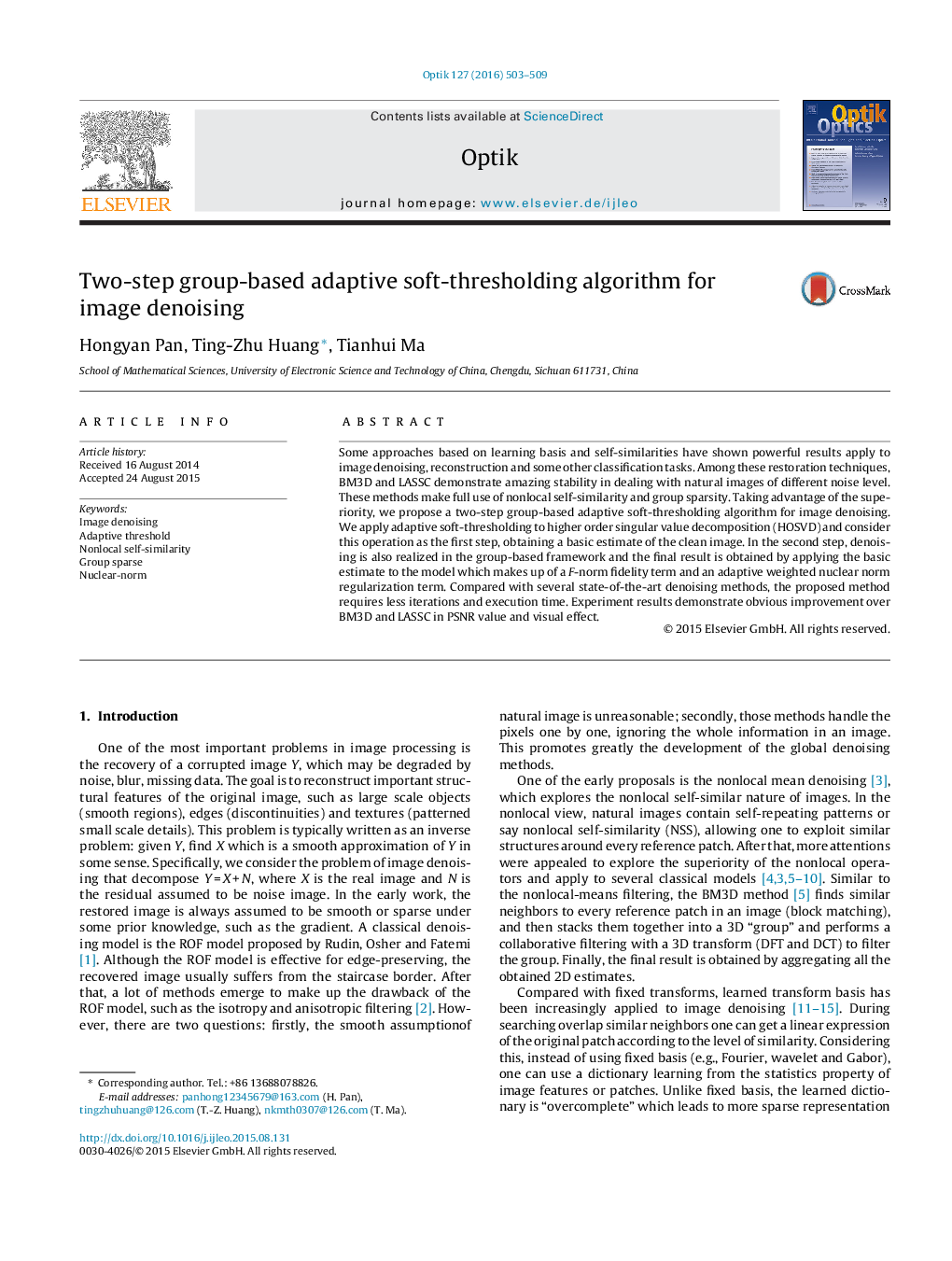| Article ID | Journal | Published Year | Pages | File Type |
|---|---|---|---|---|
| 848053 | Optik - International Journal for Light and Electron Optics | 2016 | 7 Pages |
Some approaches based on learning basis and self-similarities have shown powerful results apply to image denoising, reconstruction and some other classification tasks. Among these restoration techniques, BM3D and LASSC demonstrate amazing stability in dealing with natural images of different noise level. These methods make full use of nonlocal self-similarity and group sparsity. Taking advantage of the superiority, we propose a two-step group-based adaptive soft-thresholding algorithm for image denoising. We apply adaptive soft-thresholding to higher order singular value decomposition (HOSVD) and consider this operation as the first step, obtaining a basic estimate of the clean image. In the second step, denoising is also realized in the group-based framework and the final result is obtained by applying the basic estimate to the model which makes up of a F-norm fidelity term and an adaptive weighted nuclear norm regularization term. Compared with several state-of-the-art denoising methods, the proposed method requires less iterations and execution time. Experiment results demonstrate obvious improvement over BM3D and LASSC in PSNR value and visual effect.
